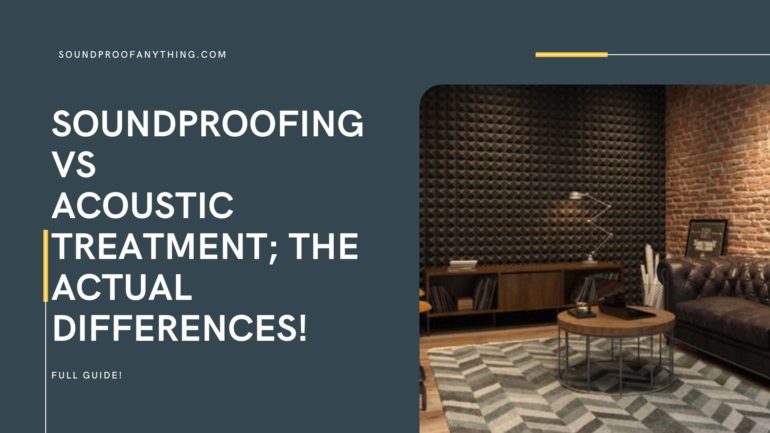If there’s one thing I often hear people getting confused about it’s got to be the difference between soundproofing and acoustic treatment, or sound absorption since they usually use both terms interchangeably and think they mean the same.
However, both techniques are quite different in terms of how they are designed to work, even though they may share some similarities.
In this article, I will be going over the differences between acoustic treatment (generally referred to as sound absorption) and soundproofing, how to determine whether you need one or the other, what materials are used for soundproofing vs acoustic treatment, and more.
So, without any further ado, let’s get started!
Table of Contents
Difference between Soundproofing and Acoustic Treatment (or Sound Absorption)
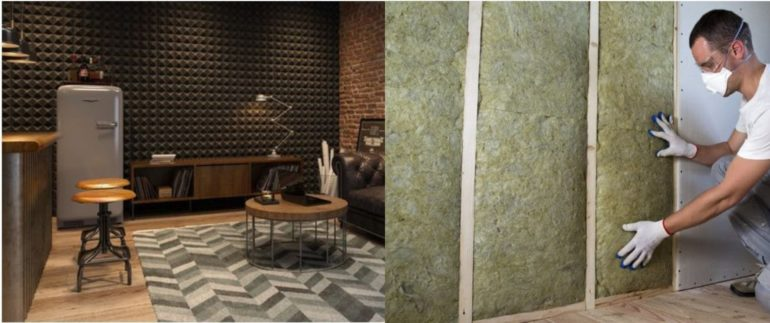
Soundproofing is designed to essentially block noise, lowering the amount that can get from one side of a structure to another, for example, a wall, whereas Acoustic Treatment works by absorbing the sound energy that is traveling through the air in order to reduce the echo and reverberation inside of a room.
If you live on a very busy street or if you have extremely noisy neighbors that are playing loud music constantly, then you need soundproofing since this will keep as much of that noise out as possible.
On the other hand, if you live in a big space that is echoey (generally the way huge and empty rooms sound like this), then you need acoustic treatment in order to absorb those sound waves to make the room feel quieter, although you won’t be blocking outside noise.
Essentially: Soundproofing = blocking sound, whereas acoustic treatment = sound absorption.
Let’s take a deeper look at what soundproofing and acoustic treatment are as well as how to effectively achieve both.
What is Soundproofing?
Soundproofing consists of using sound-blocking materials to cover all of the spaces, no matter how big or small, where sound can get through in order to keep it from getting in or out of a specific place, such as a room, office, a recording studio, etc., lowering the overall sound transmission.
Soundproofing is generally done during the construction process of the home/building since a lot of the materials used to do this need to go inside of the walls, ceiling, floor, etc.
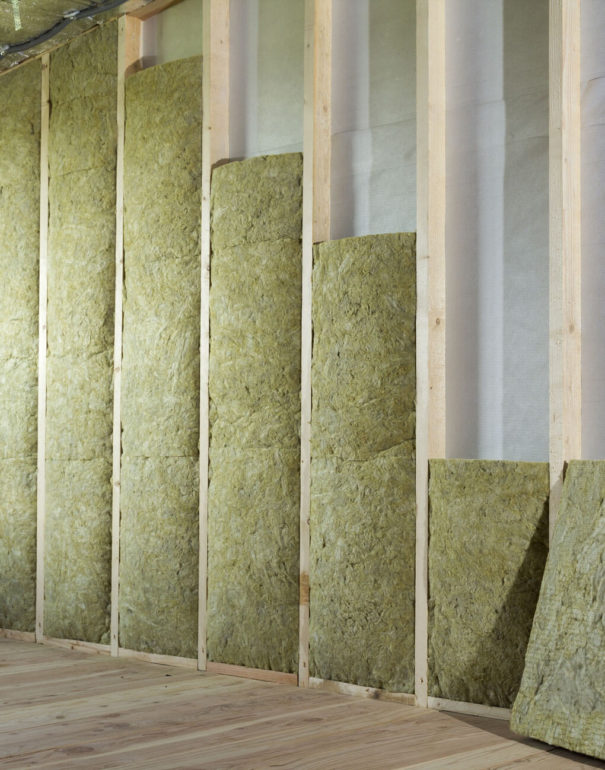
Basically, soundproofing could be considered sound isolation since its sole objective is to isolate noise and to keep it from getting transferred from one place to the other.
But just as I mentioned, soundproofing uses sound-blocking materials and not sound-absorbing materials (generally, it’s a combination of both, but more on this in a second) since you don’t really need to absorb sound energy but rather keep it from getting transferred from one place to another, and sound-absorbing materials, while they do help with this a little, are only able to absorb a little.
In short: Soundproofing = Blocking Noise transmission.
Different Noise Types (Airborne and Structure-borne)
Airborne and structure-borne noises are two completely different things and should be treated differently:
Airborne noise is the one that travels through the air, such as voices, television noise, etc. Those soundwaves travel through the air until they hit an object (a wall for example) and transmit those vibrations through the wall into the space beyond it (another room, for example).
Structure-borne noises, on the other hand, occur because of the impact of an object with a structural element of the house, such as footsteps on the floor above you or on the stairs. The impact that occurs transmits the vibrations through the structures of the house and is then perceived as sound.
The way you get rid of these two types of noises differs greatly and, usually, we can only reduce airborne sound with relative ease since structure-borne vibrations require structural changes to the building.
Let’s see how to properly soundproof and I’ll also cover both of these noise types and how to absorb them.
How to effectively Soundproof
In order to reduce noise transmission and to make your home, room, etc., soundproof, it’s extremely important to start by sealing every little hole and crack where sound might be allowed to come in since even the smallest of gaps will let a lot of noise through.
Seal everything
Using weatherstripping tape to seal the windows and doors, acoustic caulk to seal any crack between the frame of the door, or window, and the wall, or even using acoustic putty to seal hard-to-reach areas, is the first step of all and the one that generally has the highest impact.
You can learn more about how to seal every gap in these articles:
As I just mentioned, this is generally the most efficient and cost-effective way of soundproofing a room and you should always start there before you start investing in more expensive materials.
Install Sound-blocking materials
If sealing all the gaps didn’t yield the results you were looking for, then you might need to consider installing sound-blocking materials. These are generally thick & rigid, such as drywall, mass loaded vinyl, etc., and you may also want to consider double- or even triple-pane windows.
You can learn more in these articles:
How is Soundproofing Performance measured? (STC Rating)
STC, or Sound transmission class, is the rating used in the US to describe how well a building partition can attenuate sound, such as interior partitions, ceilings, floors, doors, windows, etc.
In most other countries, the Sound Reduction index is used (SRI).
The STC rating reflects the decibel reduction of noise that a partition can provide, where a higher number, or rating, equals better results, or overall attenuation.
Here’s a table showing what each STC rating represents:
| STC | What can be heard |
| 25 | Normal speech can be understood |
| 30 | Loud speech can be understood |
| 35 | Loud speech audible but not intelligible |
| 40 | Loud speech audible as a murmur |
| 45 | Loud speech heard but not audible |
| 50 | Loud sounds faintly heard |
| 60+ | Good soundproofing; most sounds do not disturb neighboring residents. |
There are multiple factors that go into calculating the STC rating, such as the acoustic medium, mass, sound absorption, and more, of the materials, but I won’t go into too much detail about this since it doesn’t pertain to the article itself.
What is Acoustic Treatment?
Acoustic treatment relies on sound-absorbing materials such as acoustic foam, Rockwool, fiberglass, etc., to absorb all of the sound reflections that are bouncing off the walls, ceiling, floor, furniture, etc. and convert them into heat energy, which reduces the duration of those soundwaves and, essentially, lowers their reverberation time (makes the room feel quiet).
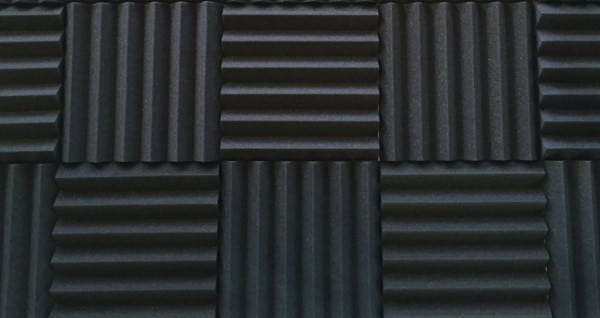
The most common items we see used for this are acoustic panels, like the ones you see in professional recording studios, home studios, home theaters, etc., which are hung from the wall in strategic places to absorb the reflected sound waves as efficiently as possible.
However, you don’t necessarily need professional panels to absorb sound in a reliable way. In fact, any thick and dense material that is air permeable, meaning that it allows air through, will absorb sound.
Examples of these objects would be a couch, cushions, thick curtains, a large and thick rug, etc.
In Short: Acoustic Treatment = Absorbing airborne soundwaves.
There is, however, one important fact to consider when trying to absorb sound, and that is the frequency that we’re trying to absorb since, generally speaking, the lower the frequency, or in other words, the lower the pitch of the sound, the harder it is to absorb, and this will determine our choice of sound-absorption material.
The importance of frequency ranges
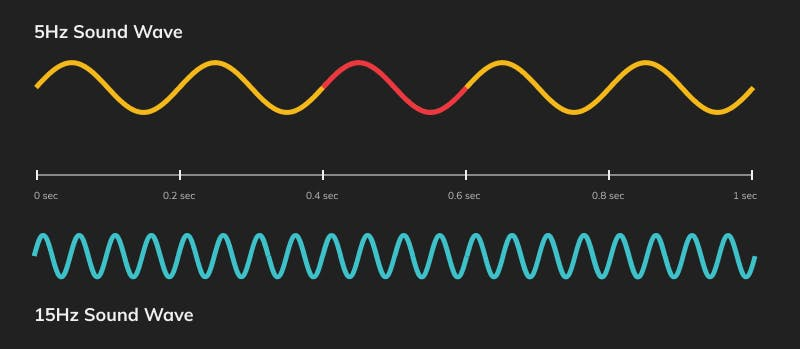
Not all frequencies of sound are absorbed equally, in fact, the lower the frequency, the harder it is to absorb, but generally speaking, the thicker and denser materials will do a better job at absorbing low frequencies than thin and light materials.
For high frequencies, using the typical thin acoustic foam panels will work, but those only absorb a narrow frequency spectrum and may not yield the effect you desire.
The better alternative is to always use thick and dense materials since these will absorb all frequencies in the whole spectrum, although 125Hz and below will generally be hard to absorb, this is why bass traps are usually so thick.
You can learn more about the importance of the thickness and density of a material for absorbing sound here (check the table at the bottom).
In short:
- Thin and light Materials (acoustic foam panels) = Absorb high frequencies.
- Thick and dense materials = Absorb a wider range of the frequency spectrum.
Do sound-absorbing materials also Soundproof?
This is a question that I think too few people answer online. Not only that, but most articles I read are often wrong or very misleading since they tell you to buy sound-absorbing materials, such as acoustic foam panels, in order to soundproof your home and this simply does not work.
As I mentioned, you need to block sound in order to soundproof since you’re trying to keep it from getting from one place to another, and in this case, you should rely on materials such as drywall, double or triple-pane windows, or anything that adds mass to whatever it is you’re trying to soundproof, and especially seal every single gap where noise could come in.
However, sound-absorbing materials are generally used together with sound-blocking ones to further reduce noise transmission. For example:
Putting Rockwool inside a typical interior wall with ½” of drywall on either side, which has an STC (sound transmission class) rating of 34 on its own, will increase that STC rating to 45 (this is an 11dB difference when adding the Rockwool).
Basically, if you install a single sheet of drywall on top of an existing wall and you fill the air gap with Rockwool, the additional reduction in sound transmission provided by the Rockwool will be quite noticeable.
Do you need Soundproofing or Acoustic treatment?
If you read the rest of the article then you already know the answer to the question, but for those who just want the short version, here it is:
If outside noise is bothering you, or if you have a rehearsal room and want to keep the noise from annoying your neighbors, then you need to soundproof.
If the room is echoey and you need to absorb the soundwaves that are generated inside of that room, for example, if you’re an audio engineer and need to acoustically treat your studio to improve the sound quality inside that room, then acoustic treatment is the way to go since it will prevent sound waves from bouncing all over the room.
Most of the time, we need soundproofing for our day-to-day life since the noises that affect us the most are coming from the outside.
However, can you really soundproof a room, home, building, etc., once it’s already been built?
Can you soundproof an existing room?
Since soundproofing is usually done during the construction phase of a home, once the walls have gone up and the windows have been put in it’s really hard to improve their sound isolation properties cheaply.
If you need to soundproof a room, for example, then you may need to put up drywall, replace the windows with soundproof ones, such as double-pane windows, and cover those windows with thick curtains (yes, curtains are designed to absorb sound, which means that they are actually good for acoustic treatment, but they will absorb some of the noise that the external sound sources make as well).
Conclusion
Acoustically treating a room is much simpler than soundproofing it since you just need to add some sound-absorbing fabrics and materials to the room and that’s it, the sound waves will be absorbed much quicker.
Acoustically treated rooms feel much quieter and less echoey, but this doesn’t mean that outside noise can’t get in.
Soundproofing properly is a lot tougher to achieve without actually tearing up the walls, filling them up with Rockwool, Fiberglass, or spray foam, and then putting up additional layers of drywall, and this is also much more expensive to do.
Contrary to acoustic treatment, a properly soundproof room may be extremely echoey since the noise generated inside of the room isn’t being absorbed, but sound can neither get in nor out.
Last Updated on May 16, 2022 by Facundo
